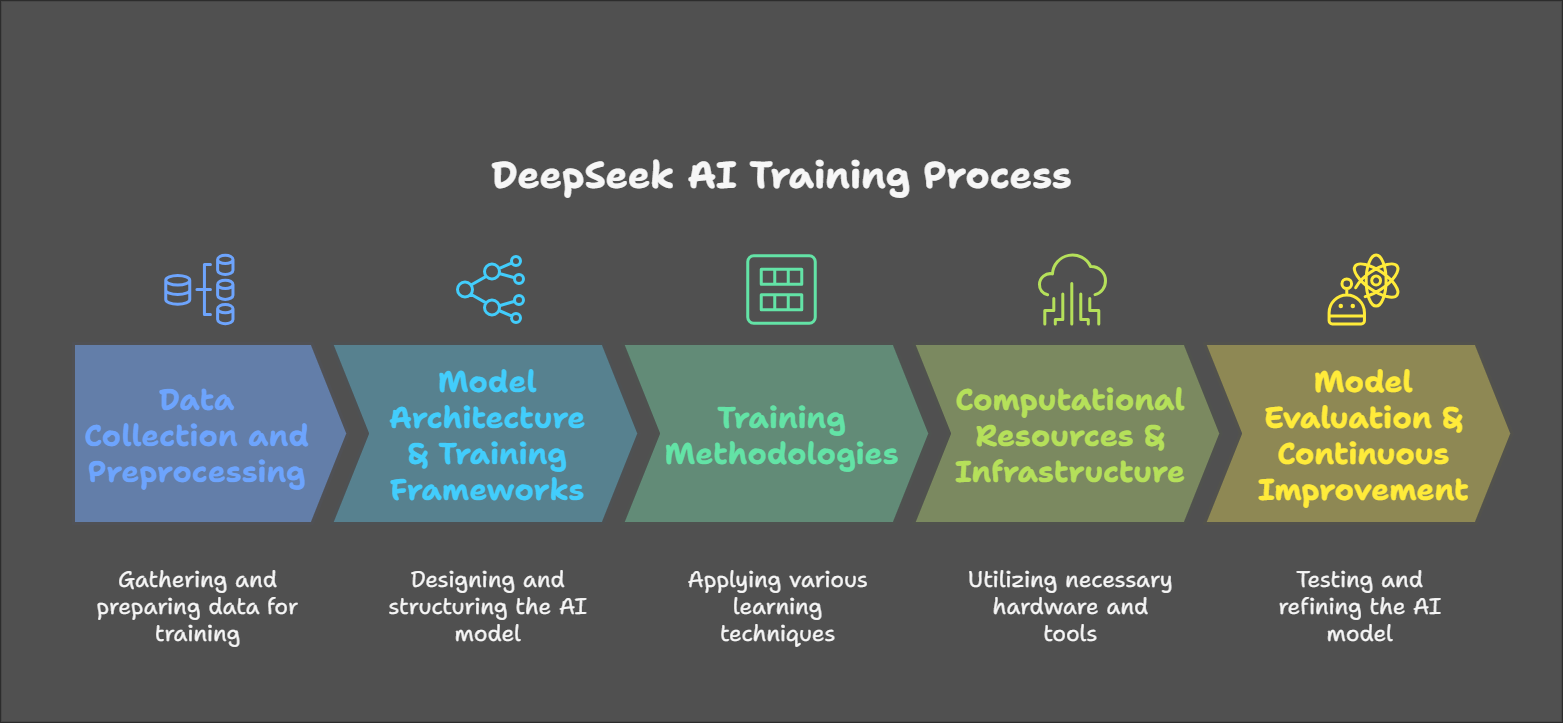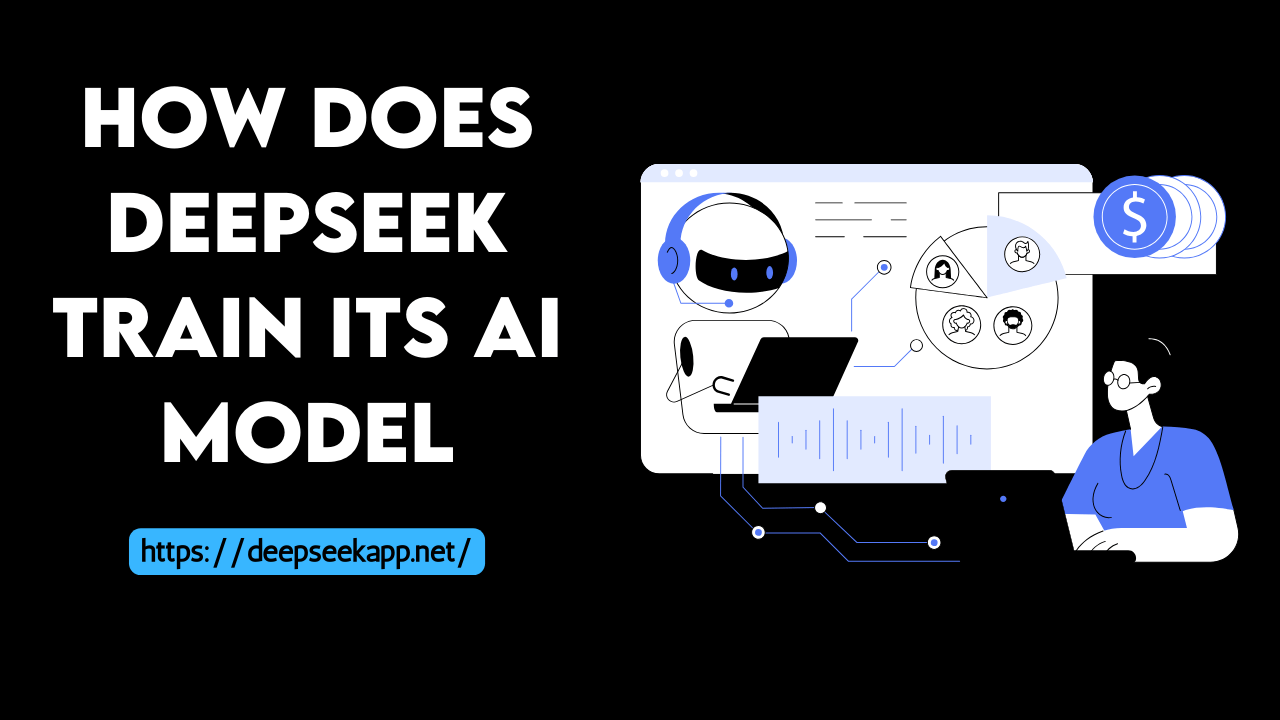DeepSeek AI has emerged as a cutting-edge artificial intelligence system, leveraging advanced machine learning techniques to push the boundaries of AI capabilities. But how does DeepSeek train its AI model?
Understanding the training process provides insight into the model’s efficiency, accuracy, and real-world applications. This guide delves into the training methodologies, dataset management, and optimization techniques DeepSeek employs.
Understanding the DeepSeek AI Training Process
1. Data Collection and Preprocessing
DeepSeek’s AI model relies on vast datasets to ensure high-quality learning. The data collection process includes:
- Sourcing Diverse Data: DeepSeek aggregates data from publicly available sources, proprietary datasets, and user interactions to create a robust dataset.
- Data Cleaning & Normalization: Removing duplicates, filtering noise, and normalizing data formats improve dataset consistency.
- Annotation & Labeling: For supervised learning, labeled datasets ensure the model can learn from accurate examples.
2. Model Architecture & Training Frameworks
DeepSeek utilizes cutting-edge deep learning architectures, including:
- Transformer-Based Neural Networks: Inspired by models like GPT and BERT, DeepSeek’s AI leverages attention mechanisms for contextual learning.
- Reinforcement Learning: Certain aspects of DeepSeek’s AI involve reinforcement learning to enhance decision-making.
- Fine-Tuning with Transfer Learning: Pre-trained models are fine-tuned with domain-specific data for optimized performance.
3. Training Methodologies
DeepSeek employs various training techniques to improve model accuracy and efficiency:
- Supervised Learning: Training the model with labeled data to develop accurate predictive capabilities.
- Unsupervised Learning: Using unlabeled data to allow the AI to detect patterns and structures.
- Semi-Supervised Learning: Combining labeled and unlabeled data to optimize learning efficiency.
- Reinforcement Learning with Human Feedback (RLHF): Enhancing AI performance based on iterative user feedback and reinforcement signals.

4. Computational Resources & Infrastructure
Training large-scale AI models like DeepSeek requires massive computational power. DeepSeek’s infrastructure includes:
- High-Performance GPUs & TPUs: Cutting-edge hardware accelerates model training.
- Cloud-Based Distributed Training: Leveraging cloud computing for parallel processing.
- AI Optimization Techniques: Implementing quantization, pruning, and mixed precision training to improve efficiency.
5. Model Evaluation & Continuous Improvement
Once the initial training phase is complete, DeepSeek undergoes rigorous testing:
- Validation & Testing: Splitting datasets for evaluation to prevent overfitting.
- Error Analysis & Bias Detection: Identifying inconsistencies and biases to improve fairness.
- User Feedback Integration: Refining model performance based on real-world interactions.
Real-World Applications of DeepSeek AI
DeepSeek AI is utilized across various domains:
- Content Generation: Powering AI-generated articles, images, and code.
- Business Automation: Enhancing customer service chatbots, analytics, and decision-making tools.
- Healthcare AI: Assisting in medical diagnosis and research.
- Gaming & Interactive AI: Improving AI-driven NPCs and procedural content generation.
Conclusion
DeepSeek AI’s training process combines state-of-the-art machine learning techniques, vast datasets, and continuous refinement to deliver an advanced AI model. Whether used for content creation, automation, or interactive applications, DeepSeek AI represents a significant leap forward in artificial intelligence capabilities.
FAQs
What makes DeepSeek AI different from other AI models?
DeepSeek AI integrates advanced transformer models, reinforcement learning, and user feedback for superior contextual understanding and accuracy.
How does DeepSeek ensure data quality during training?
DeepSeek employs rigorous data cleaning, filtering, and annotation processes to maintain high-quality datasets.
Can DeepSeek AI be fine-tuned for specific applications?
Yes, DeepSeek supports fine-tuning with domain-specific data for customized AI solutions.
What kind of hardware is required to train an AI model like DeepSeek?
DeepSeek relies on high-performance GPUs, TPUs, and cloud-based distributed computing to handle large-scale AI training.
How does DeepSeek address AI bias and ethical concerns?
DeepSeek incorporates bias detection techniques, fairness evaluations, and continuous model refinement to ensure ethical AI usage.

